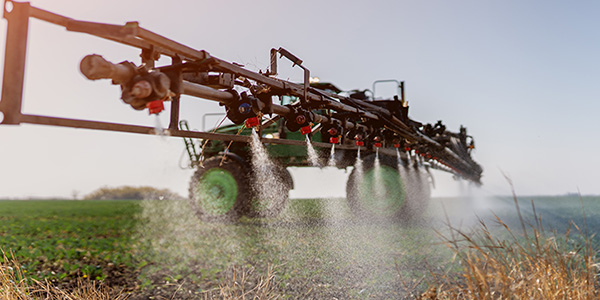AGRONOMICSUPPORT
YOU CAN TAKETO THE FIELD
How to match your soybean traits with herbicide system best practices
Selecting herbicide tolerant soybeans is only the first step. But to protect your yield, you also have to properly manage those varieties’ herbicide systems.
 Three Growth Regulator tolerant soybeans have appeared on the U.S. market in recent years: Roundup Ready 2 Xtend® soybeans, XtendFlex® soybeans, and Enlist E3® soybeans. While they’re all tolerant to herbicides from the Growth Regulator family—Group 4—there are crucial distinctions.
Three Growth Regulator tolerant soybeans have appeared on the U.S. market in recent years: Roundup Ready 2 Xtend® soybeans, XtendFlex® soybeans, and Enlist E3® soybeans. While they’re all tolerant to herbicides from the Growth Regulator family—Group 4—there are crucial distinctions.
Misapplication of these herbicides can result in serious crop injury or death. So, ensuring your yield’s health requires careful planning, attention to labels, and matching your specific beans’ trait packages with their best application practices.
If you’re using the Roundup herbicide system…
Good news: all three traits (RRX, XF, and E3) are tolerant to Roundup’s active ingredient, glyphosate.
If you’re using the Liberty herbicide system…
Stay away from RRX. Only XtendFlex and Enlist E3 soybeans are tolerant to Liberty’s active ingredient, glufosinate.
If you’re using herbicides with dicamba…
Stick to Roundup Ready 2 Xtend and XtendFlex.
Dicamba is active in XtendiMax herbicide with VaporGrip technology and Engenia, for example. However, no matter what commercial dicamba you choose, make sure it’s labeled for use in dicamba-tolerant soybeans.
There are older dicamba formulations out there (like Clarity) that are often cheaper. And your beans will usually survive the application, so it can be tempting to go with these older options, especially if you don’t have retail oversight. But these choices are illegal, off-label, and more likely to move off-target.
To make sure you’re following best practices (agronomically, and legally), it’s important to check with your chemical supplier and your individual state’s chemistry authority. It can save major headaches down the road.
If you’re using herbicides with 2,4-D…
Only opt for Enlist E3 soybeans.
2,4-D is active in Enlist One and Enlist Duo—and presents the same cautionary tale as dicamba. Whichever commercial 2,4-D option you use, make sure it’s labeled for in-crop use in 2,4-D tolerant soybeans.
Like with dicamba, there are older, off-label choices out there that could save growers money in the short term. But the long-term risk isn’t worth it. There can be legal ramifications, along with the risk of off-target movement and crop injury or death. Check with your chemical supplier and local chemical authority to make sure you’re following all label requirements.
Beware a burndown application
Say you still want to make an off-label application of a herbicide not part of your chosen system (pre-planting). For example, you burn down a field with previous dicamba applications, three days before planting Enlist beans. You might think you’re safe. But this process will still likely cause crop death—or at the very least, poor stands.
Before a burndown application, check your chemistry label and seed order to make sure your soybeans are compatible with it. That quick check will be protecting your fields’ long-term health and is worth the extra step. For more details, check out our soybean herbicide tolerance guide.
Herbicide systems are certainly helpful to any grower, and shouldn’t cause extra stress. So save yourself from potential trouble by matching your best practices with your specific planted traits.
Most importantly, check with your supplier or local chemistry authority to make sure you’re following label (and legal) requirements. If you skip this step, you risk crop injury and lost yield—both for yourself and your neighbors.
ALWAYS READ AND FOLLOW IRM, WHERE APPLICABLE, GRAIN MARKETING AND ALL OTHER STEWARDSHIP PRACTICES AND PESTICIDE LABEL DIRECTIONS.
Visit www.lgseeds.com/technology for full product restrictions.





